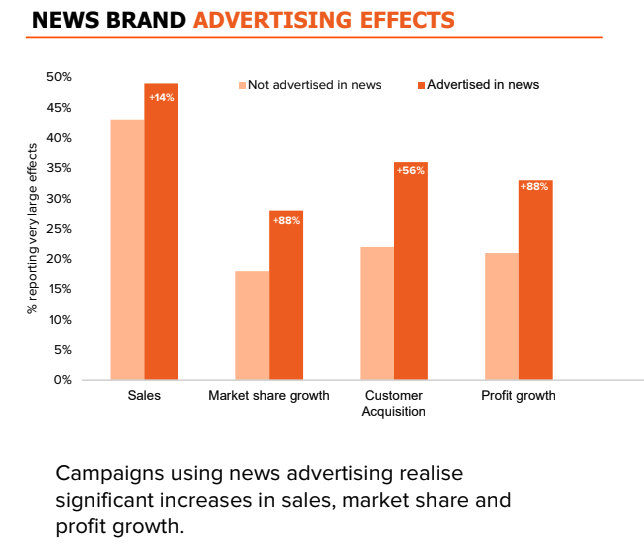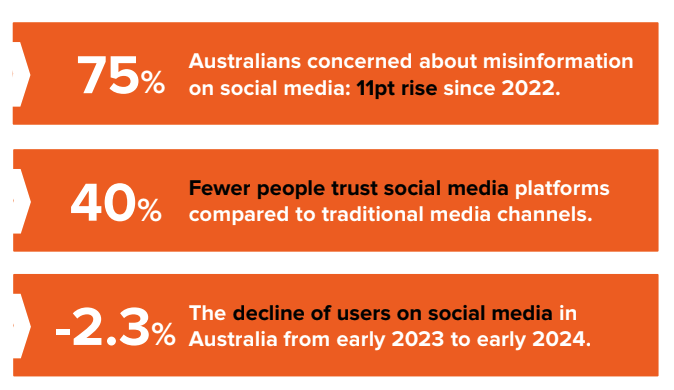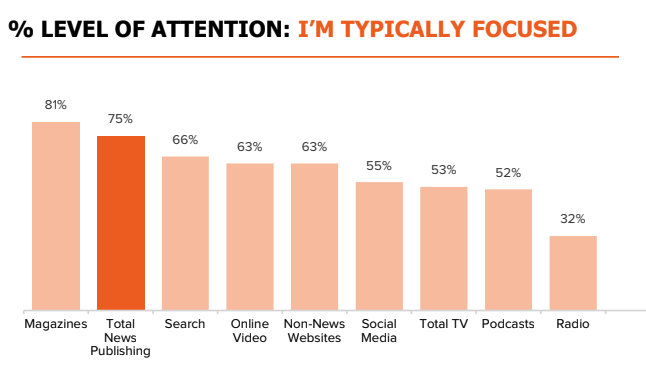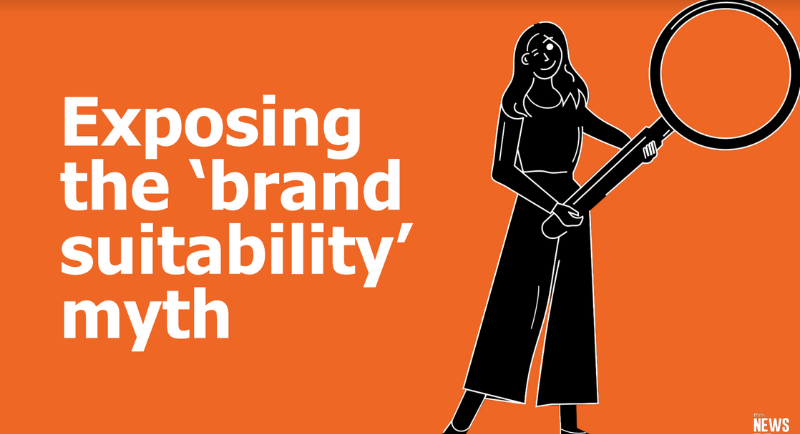ThinkNewsBrands has released a multi-study report to dispel a myth that has led some advertisers to avoid placements in news media.
The marketing body for premium news publishers listed the key takeaways from the research:
• There is no negative impact on a range of performance and brand perception measures from advertising in ‘hard news’
• Advertisers are sacrificing significant ROI and profit growth by avoiding news
• Dangers of social media are being ignored by the industry’s brand suitability actions reserved for news
Avoiding hard news: Campaign placements not based on facts
The perception around “brand suitability” that has led some advertisers and their agencies to avoid placing ads in news publishing, isn’t based on facts, said Think News Brands chief executive Vanessa Lyons.
“Many brands and agencies avoid completely placing ads in hard news environments,” Lyons told Mediaweek. “That might be crime, the financial crisis, and politics. Brands and advertisers blanket closing off any opportunity to put their brands amongst that content.
“The fear is that placement might negatively impact brand perception and performance.
“Over the past few months, in particular, there have been many international reports dealing with this. There is one particular statement from the outgoing global head of GroupM, Christian Juhl. He talked about hard news avoidance and how advertisers don’t trust it and feel unsafe in that environment.”

Vanessa Lyons
Christian Juhl comments at a US Senate hearing in July, 2024
“One of the marketers’ biggest fears is that years of brand value could evaporate overnight as a consequence of bad ad placement, companies spending millions of advertising dollars do not want to risk their brand on a strategy that could backfire. Brands consistently inform us as their agency, that they do not want to advertise next to hot-button or divisive content. They want predictable, reliable environments.
“Brands generally disfavour advertising next to news. For example, only 1.28% of brand spend is allocated to online news at this point. This is because brands to prefer to avoid advertising alongside common news, content, war, scandal, political division, and also because they do not need to advertise there to reach their target audience. Alternatives such as sports and entertainment provide a better way to reach these same consumers. This is not a left, right or GroupM preference. It is apolitical. It’s an industry-wide preference.”
‘Stunning misrepresentation’
Media agency executive turned Schwartz Media CEO Ben Shepherd told Mediaweek’s Alisha Buaya recently he has had discussions with brands over concerns about appearing near inflammatory opinion pieces, and recommended avoiding specific verticals if there was discomfort. Shepherd said he never encountered a client who wanted to completely avoid the news.
“And I never have had a client categorise news as Juhl did as ‘war, political division and scandal’,” Shepherd added. “This is a categorical misrepresentation that is stunning from the leader of a media agency in control of over USD$60 billion of investment globally.”
Vanessa Lyons continued: “We have proven for a number of years this should not be an issue. We felt the time was right to address this again and just give the facts that will be able to put this myth to bed.
“The evidence strongly contradicts this is an issue.
“One of the things we wanted to do was highlight some of the international research and then support those findings with Australian data including ThinkNewsBrands effectiveness research.”
Data referred to in the ThinkNewsBrands report
• May 2024 research by NAZDAQ-listed company Stagwell, involving 50,000 adults, which shows no negative impact from advertising in ‘hard news’.
The study found placing ads next to stories about conflict, inflation, politics or crime had no discernible difference on purchase intent, favourability or brand perception compared to placing ads next to sport or entertainment. Across 8 key brand metrics, including among others ‘purchase intent’, ‘trustworthiness’ and ‘right values’, the average perception score difference between ‘hard’ and ‘soft’ news was 1.6%.
• Research by Peter Field that shows advertisers that avoid news sacrifice market share, pricing power (quality perception) and profit growth.
According to the Field research, brands that advertised on news platforms from 2018-2022 had an 88% higher profit and market share growth compared to those that did not.
ThinkNewsBrands has combined the latest global and local research from Stagwell/HarrisX, Edelman, NewsWorks, the University of Canberra, FiftyFive5 and ThinkNewsBrands to dispel the “brand suitability” myth.

The thinking around ‘brand suitability’, that has led some advertisers and their agencies to avoid placing ads in news publishing, isn’t based on facts, ThinkNewsBrands comments.
New evidence strongly contradicts claims that brands suffer from advertising in news publishing content.
Furthermore, evidence shows this misconception is leading advertisers to miss out on significant ROI and profit.

Brand suitability actions seem reserved for news, despite other platforms housing harmful content, increasing deepfakes, AI-generated content and misinformation that really can impact brand perception.

Lyons noted in her discussions with agencies and advertisers they had confirmed a reluctance to be seen amongst hard news. She feels this report should shake up that thinking.
“The result for advertising – whether it be ROI, profit, acquisition – for a brand is much stronger when news is in the placement mix.
“Ultimately what we want to do is to start a dialogue. Advertisers should have the correct facts to take back to their C-suite and say it is not a risk to place ads amongst hard news.
“Everyone is operating off a concern and a risk profile. But the risk profile is not based on facts.”

